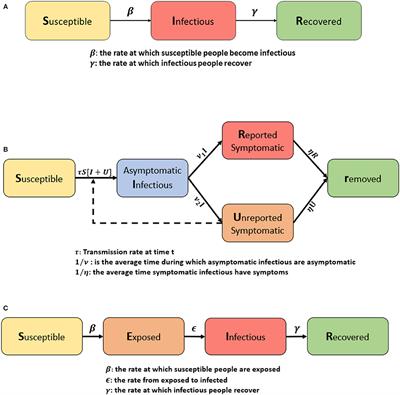|
Anapafseos 5 Agios Nikolaos 72100,Crete,Greece,00302841026182,00306932607174,alsfakia@gmail.com
Blog Archive
- ► 2022 (3010)
- ► 2021 (9899)
-
▼
2020
(4138)
-
▼
November
(1979)
-
▼
Nov 16
(77)
- Brain imaging abnormalities and outcome after acut...
- Epilepsy, an orphan disorder within the neurodevel...
- Recognising hemihypomimia as a mimic of 'facial we...
- Isaacs syndrome: the frontier of neurology, psychi...
- Cognition and behaviour in frontotemporal dementia...
- Vaccines, Vol. 8, Pages 689: Characterization of S...
- Removing the legal barriers to treating the excruc...
- Implantable Bladder Wrap for Improved Urinary Control
- Determining dengue virus serostatus by indirect Ig...
- Acute targeting of pre-amyloid seeds in transgenic...
- Severe reactive astrocytes precipitate pathologica...
- Sotagliflozin in Patients with Diabetes and Chroni...
- Sotagliflozin in Patients with Diabetes and Recent...
- A novel ACT-based video game to support mental hea...
- Interventions to facilitate return to work in adul...
- Folic acid supplementation beyond the first trimes...
- Remote ischaemic preconditioning in solid organ tr...
- Laparoscopic bowel resection combined with inflixi...
- Low-flow or high-flow nasal cannula with head side...
- Influence of the month of birth on persistence of ...
- Impact of patient characteristics on efficacy and ...
- Sodium selenate as a disease-modifying treatment f...
- An Investigation of the Eating Concerns Scale of t...
- NICE guideline review: Neonatal parenteral nutriti...
- Intermittent cycled phototherapy may control peak ...
- The dying patient: taboo, controversy and missing ...
- Bubble CPAP splitting: innovative strategy in reso...
- Prophylactic administration of tirofiban for preve...
- Endovascular management of torcular dural sinus ma...
- Clinical Predictors of Transient versus Persistent...
- Amelioration of systemic inflammation in advanced ...
- Heterogeneity of PNPT1 neuroimaging: mitochondriop...
- Prevalence and frequency of menstrual cycle sympto...
- Injury incidence and burden in a youth elite footb...
- Tick-transmitted thogotovirus gains high virulence...
- Intestinal Pseudo-Obstruction as the Initial Clini...
- A Rare Complication of Noncompliance Status Post-T...
- Randomness for Nucleotide Sequences of SARS-CoV-2 ...
- Tear Lipid Layer Thickness in Children after Short...
- Effect of Platelet-Rich Plasma Injection on Mild o...
- Burden of Uterine Rupture and Its Determinant Factors
- Effects of Urate-Lowering Therapy on Risk of Hyper...
- Factors Affecting Compliance of Infection Control ...
- Essentials of a Robust Deep Learning System for Di...
- Risk Factors of Cerebral Infarction and Myocardial...
- Separability of Acute Cerebral Infarction Lesions ...
- NAC Supplementation of Hyperglycemic Rats Prevents...
- Invalid Self-Assessment of Olfactory Functioning i...
- Comparison of the Stability of Two Intraocular Len...
- Systemic Inflammation Response Index Predicts Surv...
- Modulated Electrohyperthermia: A New Hope for Canc...
- Reducing Sugar, Total Phenolic Content, and Antiox...
- Research Status of Differentially Expressed Noncod...
- A Novel STAT3-Mediated GATA6 Pathway Contributes t...
- Structural Brain Imaging Phenotypes of Mild Cognit...
- Oxidative Stress in Amyotrophic Lateral Sclerosis:...
- A Potential Role for Mitochondrial DNA in the Acti...
- Oxymatrine Ameliorates Memory Impairment in Diabet...
- Distributed Fiberoptic Sensor for Simultaneous Tem...
- Synergism and Antagonism of Two Distinct, but Conf...
- Vestibular Schwannoma: What We Know and Where We a...
- Nasal Chondromesenchymal Hamartoma
- YAP1-NUTM1 Gene Fusion in Porocarcinoma of the Ext...
- Anaplastic Large Cell Lymphoma with Oral Manifesta...
- COVID-19: Vaccine's Efficacy Near 95% / 1M Pediatr...
- Patisiran in hereditary transthyretin-mediated amy...
- Patisiran for hereditary transthyretin-mediated am...
- Nothing to be ashamed of: sex robots for older adu...
- Chemotherapy alone or chemotherapy plus panitumuma...
- LSG vs MGB-OAGB: 5-Year Follow-up Data and Compara...
- 18F-Fluorocholine PET/CT is a highly sensitive but...
- Congenital hypothyroidism: Space-time clustering o...
- COVID-SGIS: A Smart Tool for Dynamic Monitoring an...
- Learning to BREATHE “Plus”: A Multi-Modal Adaptive...
- Lockdown Exit Strategy
- The Mechanisms of Type 2 Diabetes-Related White Ma...
- Comparing the LBSap, Leishmune®, and Leish-Tec® Va...
-
▼
Nov 16
(77)
-
▼
November
(1979)
- ► 2019 (2429)
Αλέξανδρος Γ. Σφακιανάκης
Monday, November 16, 2020
COVID-SGIS: A Smart Tool for Dynamic Monitoring and Temporal Forecasting of Covid-19
Subscribe to:
Post Comments (Atom)



No comments:
Post a Comment